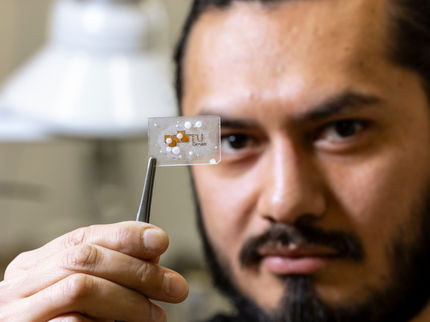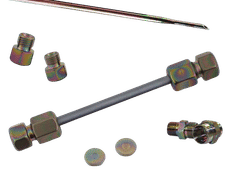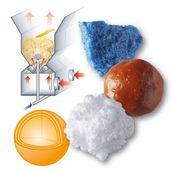Flake-like nanoparticles offer reliable rust protection
Advertisement
Large quantities of steel are used in architecture, bridge construction and ship-building. Structures of this type are intended to be long-lasting. In particular, the steel is attacked by oxygen in the air, water vapor and salts. Various techniques are used to prevent the corrosive substances from penetrating into the material. One common method is to create an anti-corrosion coating by applying layers of zinc-phosphate. Now research scientists at INM developed a special, flake-like type of zinc-phosphate nanoparticles. As a result of this anisotropy, the penetration of gas molecules into the metal is slowed down. The developers will be demonstrating their results and the possibilities they offer at this year's Hanover Trade Fair.

Flake-type nanoparticles of zinc-phosphate increase the gas barrier for corrosion protection in steel.
INM/Uwe Bellhäuser
“In first test coatings, we were able to demonstrate that the flake-type nanoparticles are deposited in layers on top of each other thus creating a wall-like structure,” explained Carsten Becker-Willinger, Head of Nanomers® at INM. “This means that the penetration of gas molecules through the protective coating is longer because they have to find their way through the ´cracks in the wall´”. The result, he said, was that the corrosion process was much slower than with coatings with spheroidal nanoparticles where the gas molecules can find their way through the protective coating to the metal much more quickly.
In further series of tests, the scientists were able to validate the effectiveness of the new nanoparticles. To do so, they immersed steel plates both in electrolyte solutions with spheroidal zinc-phosphate nanoparticles and with flake-type zinc-phosphate nanoparticles in each case. After just half a day, the steel plates in the electrolytes with spheroidal nanoparticles were showing signs of corrosion whereas the steel plates in the electrolytes with flake-type nanoparticles were still in perfect condition and shining, even after three days. The researchers created their particles using standard, commercially available zinc salts, phosphoric acid and an organic acid as a complexing agent. The more complexing agent they added, the more anisotropic the nanoparticles became.
Original publication
Perre, Emilie, Albayrak, Sener, Wild, Mandy, Becker-Willinger, Carsten; "Flake-type zinc phosphate particles as new corrosion protection additives in organic coatings"; Conference transcript of EUROCORR 2015, September 06-10, 2015, Graz, 2015




























































